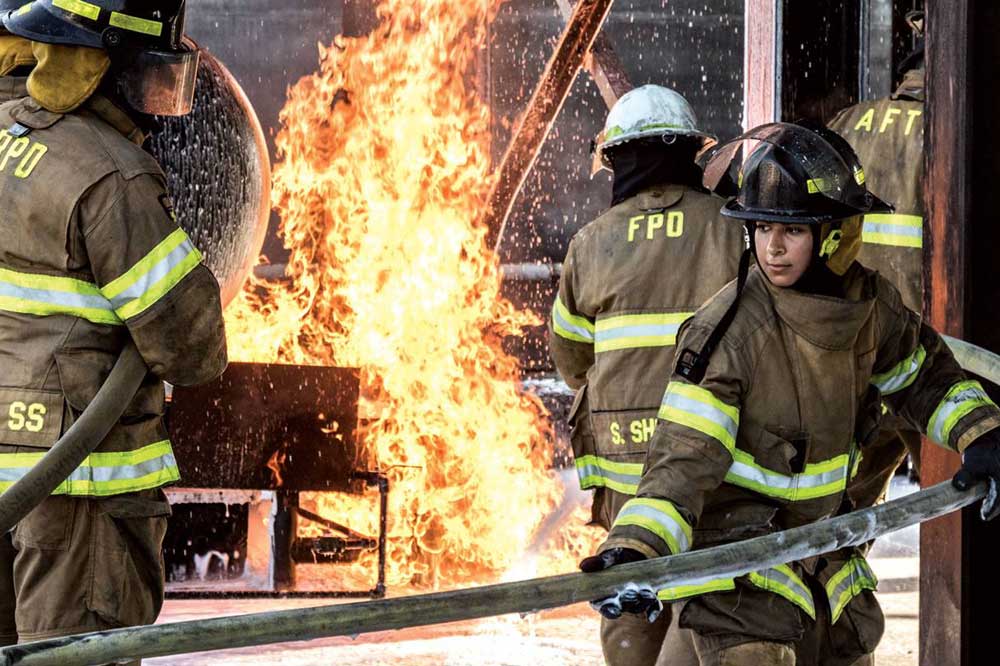
I didn’t set out to be part of a historic event when I received my firefighter certification training in December 2018, but my engineering colleague Jazyah Al-Dossary and I became Saudi Arabia’s first females to receive NFPA certification in firefighting. The saying goes that a first responder runs towards danger when everyone else is running away and I do think it takes a certain passion to give back to the community in this way. In my case, the desire was to help protect lives, property and the environment against destruction, as well to become a better engineer.
I joined Saudi Aramco in July 2017 to work as an engineer in the company’s Fire Protection Department (FrPD). Becoming Pro Board certified in Firefighter I and II, Hazmat Awareness and Hazmat Operations required an eight-week training program - before which I had to undergo rigorous physical training and pass medical and skill tests. I was in the field from 7a.m. to 4p.m., learning fire suppression techniques, fire and smoke behavior, vehicle extrication, rescue techniques and more. Being able to train and work with frontline firefighters let me tap into their experience and knowledge. Upon completing this program and returning to the engineering division, I was able to better understand the business and support our operations.
People tend to think of firefighters primarily in terms of putting out a blaze and it’s true that the work requires a combination of physical ability, technique and situational awareness. But there’s actually a deep core of science, technology, engineering and math to the job. In order to understand how fires behave and how they can be extinguished, it is necessary to understand the science of it – physics and chemistry play a huge part in extinguishing a fire.
I use physics every day. For instance, rescuing a victim through an upstairs window requires not only strength, but also the ability to distribute weight on different body parts and choose the correct angle for the ladder. Physics also comes into play in knowing how to control pressure on hose nozzles and pumps so the fire can be properly controlled and extinguished.
Extinguishing fires is a matter of interrupting a chemical chain reaction. Therefore, it is important to acquire a good understanding of what happens during a fire, in order to choose the best method and extinguishing agent to put out the fire and avoid making it worse.
As technology advances, more innovation is injected into the equipment used in firefighting. An important piece of equipment we use is Thermal Imaging Cameras “TICs” – devices that translate thermal energy (heat) into visible light in order to analyze a particular object or scene. Handheld TICs can be an extremely valuable tool for firefighters to use in conducting their initial and on-going size-up of a hazardous materials incident. In addition, because the thermal cameras detect heat produced by the human body, searcherscan use them to see in a smoke-filled or low visibility area.
Working as an engineer in the fire protection department, I balance office and field work. In my home unit, I performed technical evaluations of products and innovations, such as a stove-guard device designed to reduce the incidence of cooking equipment fires, the leading cause of house fires and fire injuries.
I feel very proud to be a part of the Kingdom’s historic progress and to receive NFPA firefighting certification. Once a development like this is set in motion, there will be growth in the number of women joining previously “male dominated” professions. Diversity is important to bring the full complement of differing skill sets, talents and perspectives to the table.
The old saying goes that if you want real insight into what someone goes through on a day-to-day basis, you should walk a mile in their shoes. In my case, walking that proverbial mile in steel-enforced firefighter boots – while wearing the 70-odd pounds of full protective gear – made me a better engineer.

















